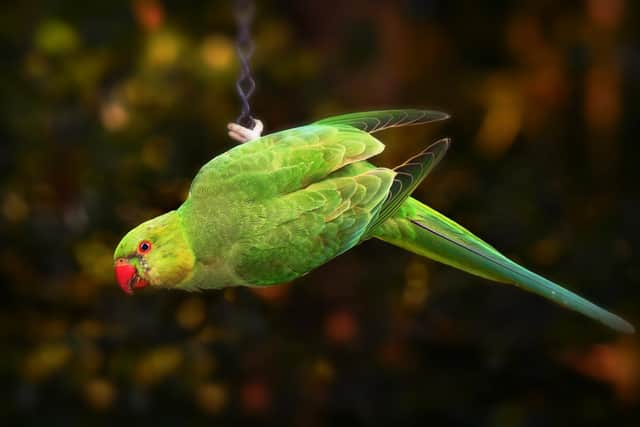Increasing numbers of ring-necked parakeets spotted in Horsham
and live on Freeview channel 276
Sightings of the birds – which have colonised a number of London parks – are being reported around Lambs Farm Road and other areas of Roffey. There have also been sightings south of Horsham in Southwater.
People have taken to social media to share their findings with one person reporting that he had regularly spotted an early-morning flock of around 12 of the parrot-like birds over Roffey for the past year.
Advertisement
Hide AdAdvertisement
Hide AdThe ring-necked parakeet’s native range is a broad belt of tropical countryside stretching from west Africa across India south of the Himalayas where it is a common bird.


How the ring-necked parakeet population first came to thrive in the wild in England is not known, however, it is thought that a pair or more of breeding parakeets escaped or were released from captivity some time in the mid-1990s.
Some people consider the birds a pest but ring-necked parakeets, like all birds living in the wild in the UK, are protected by law.
They feed on a wide variety of fruit, berries, nuts, seeds, grain and household scraps.
Advertisement
Hide AdAdvertisement
Hide AdThe Royal Society for the Protection of Birds estimates there to be around 8,600 breeding pairs of parakeets in Britain.
It describes the birds as “the UK's only naturalised parrot. It's medium-sized with a green body, long-tail, red beak and a pink and black ring around its face and neck.
"In flight, it has pointed wings and a long tail. It flies very steadily, directly and speedily. It's often found in flocks, which can reach hundreds at a roost site. Its loud call often gives it away.”
